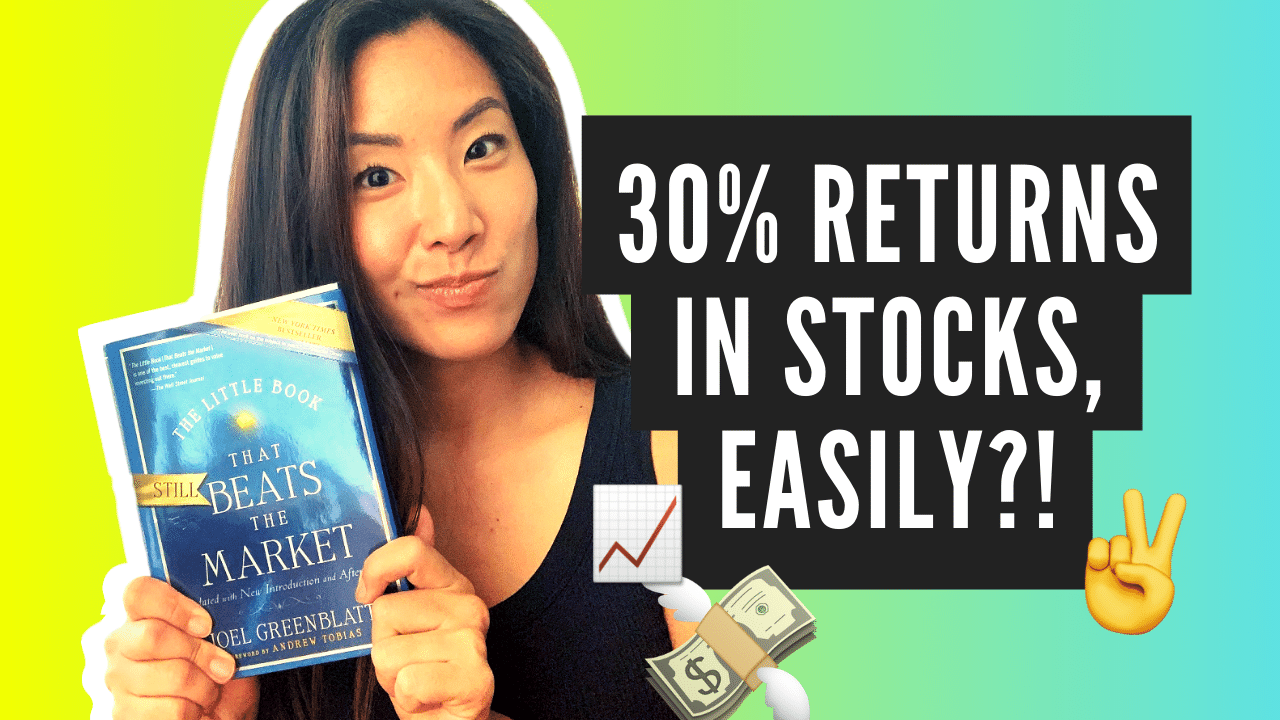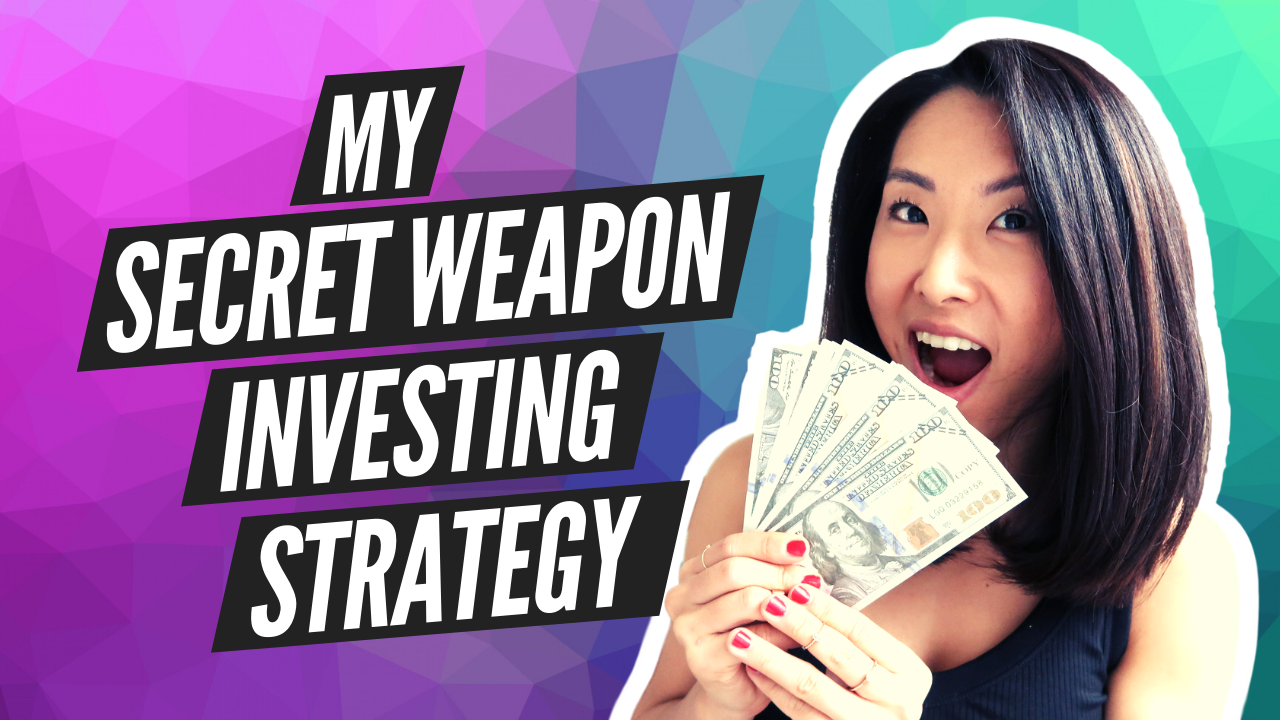The Super-Power Investing Strategy
This blog is all about the Magic Formula, a super-powerful investing strategy that has earned 20-30% returns over the last few decades. Just to give you an idea, with a 30% average annual return you can turn 10k into $1 million in just 18 years.
The best part? You don’t need to be a stock genius to do this. The Magic Formula is actually a really simple strategy that anyone can follow. In this blog, I’m going to explain how the strategy works and how to implement it.
So if you’re interested in making a 20-30% return on your money with the Magic Formula, then keep reading!
So let’s dive straight in!
- First, I’ll explain what the Magic Formula is and how it works.
- Then, I’m going to give you some background info on WHY it works.
- And finally, I’ll walk you through how to implement it on your own.
Let’s start with a basic explanation of what the Magic Formula is and how it works
The Magic Formula is a stock investing strategy developed by superstar hedge fund manager Joel Greenblatt. His fund, Gotham Capital, has a long-term track record of 40% annual returns, which is really hard to do. Basically, Joel Greenblatt is a f*cking legend in the investment world.
He explains everything you need to know about Magic Formula investing in his book, The Little Book That Still Beats The Market. I’ll summarize the key takeaways of the book in this blog.
The Magic Formula is a system that ranks all the publicly-traded stocks in the U.S. in order of the best investment to the worst investment. Then using this ranking, you buy the top 20-30 stocks. You can think of the Magic Formula as a ranking system that calculates which stocks are going to perform the best. There’s no rocket science involved – this ranking system uses just TWO key metrics.
So what are these two metrics? I’ll tell you what they are, and then I’ll explain each one in more detail. The first metric is a return on capital, and the second metric is earnings yield.
TWO KEY METRICS
- Return on capital- is the percentage of a company’s earnings relative to the capital spent to generate those earnings. For example, Company A is a store that sells widgets. It cost $1m of capital to build the store, hire employees, and buy an inventory of widgets. The store generates annual net profits of $100k. So Company A has a return on capital of 10% – or $100k divided by $1m. On the other hand, Company B is a similar store that also sells widgets. It also cost $1m of capital to get the store up and running. But Company B generates annual net profits of $500k. That’s a return on capital of 50%. Which company would you rather invest in – Company A or Company B? The answer is obviously Company B. The higher the return on capital, the better because it means this business knows how to maximize profits given a fixed amount of resources. Sure – great companies have great products, a good CEO, great growth potential, or whatever – but all of those factors are so subjective. The only way to know for SURE whether a company is a good investment or not, is to look at the numbers. Numbers are not subjective, numbers don’t lie, so a great company will have the numbers to back it up. And the best number to look at is the return on capital. By definition, great companies generate high returns on capital. So that’s the first metric the Magic Formula uses to rank the best stocks.
- The second metric is the Earnings Yield. Earnings yield compares a company’s earnings to its purchase price. For example, going back to my widget companies – Company A earns $100k a year, and let’s say that the owner is willing to sell you the company for $5m. Is it a good deal for you? Well, it depends – what is that $5m going to get you? If you buy Company A, you’re going to be entitled to its earnings of $100k a year. On a purchase price of $5m, that’s an earnings yield of 2%. On the other hand, let’s say that you have the option to buy Company B for the same purchase price of $5m. But Company B has earnings of $500k – in other words, an earnings yield of 10%. What’s a better bargain, Company A or Company B? The answer is Company B. Even though they’re both tradings at the same price of $5m, Company B is a better deal, because it’s more profitable than Company A. In other words, more bang for your buck. The higher the earnings yield, the better, and that is the second metric used by the Magic Formula to rank stocks.
When you screen stocks through these 2 metrics, you end up with stocks of great companies at bargain prices. Buying great companies at bargain prices. THAT is the most fundamental concept of successful value investing. It’s common sense, right? You don’t want to buy shitty companies, you want to buy great companies. And you want to buy those great companies – not at any price, but at bargain prices. You want the best of both worlds – above-average companies at below-average prices.
The Magic Formula is a simple, systematic way to do just that! When you systematically buy stocks of above-average companies at below-average prices, you’re bound to do really really well. How well? Well, let’s compare with other stock investing strategies.
In the book, Greenblatt compares how a Magic Formula investing strategy performed relative to the S&P 500 over a 21 year period, between 1988-2009. Hopefully, he comes out with an updated edition with more recent numbers, but you can still get the idea. 9.5% compared to 23.8%. That means if you started with $10k in 1988 and you invested using the Magic Formula, you’d have $885,387 by 2009, compared to $67,250.65.
Amazing right?! So what’s the catch? Ahhhh there’s always a catch. If it was that easy, everyone would be doing this and we’d all be billionaires. Like anything worth doing, the Magic Formula works, but it’s a long-term investing strategy. You’re not gonna get “instarich” – and the strategy only works if you stick with it for at least 3-5 years. Even though the Magic Formula outperforms the market over a long time period, it might actually underperform the market for small stretches of time. Unfortunately, most people aren’t patient or confident enough to keep the faith and stick with the strategy long enough to enjoy those amazing 23.8% returns. Don’t be one of those people! If you’re going to investing with the Magic Formula, plan to stick with it for at least 3-5 years, even if your friends are making more money than you in sexier stocks like TSLA and AMZN. The key here is PATIENCE.
Now I want to touch on WHY the Magic Formula works
The average newbie investor has no idea how to evaluate stocks. Most investing beginners invest in the hot stocks that everybody is talking about it at the time, and they don’t really know why it’s a good investment other than the fact that other people are saying it’s a good investment. If you buy individual stocks without crunching some numbers and forming a solid argument for why it’s a good investment – you’re gambling. You’re investing based on hope, greed, FOMO – all kinds of emotions that have no place in your investing decisions.
As Joel Greenblatt says in his book, “Choosing individual stocks without any idea of what you’re looking for is like running through a dynamite factory with a burning match. You may live, but you’re still an idiot.”
But you know what? Researching individual stocks is a lot of work. That’s what Warren Buffett does. He reads a ton, and he usually only has about 8-10 high-conviction stock positions in his portfolio. Most people aren’t cut out for that. Most people have full-time jobs and other hobbies they’d rather do in their free time. That’s why most people are advised to diversify their investments as much as possible, with something like an S&P 500 index fund.
The Magic Formula is something in between Warren Buffett and an S&P 500 index fund. The formula screens through thousands of stocks, and you end up buying only the top 20-30 stocks. It’s still very diversified because 20-30 is still a high enough number that you’re not overly exposed to any one stock. But it’s not AS diversified as an S&P 500 index fund, which has 500 stocks in it. So the Magic Formula gives you better results than an S&P 500 index fund because the strategy concentrates on the top 20-30 stocks and excludes the mediocre stocks.
Personally, I think the Magic Formula is brilliant because it gives you the best of both worlds. It takes the emotion out of my investing decisions because it’s based on two purely quantitative metrics, but it also doesn’t require me to do a ton of research and value companies all day. Although I do also invest in individual stocks, I invest about ⅓ of my money using the Magic Formula because it’s a great way to always have some money working for me even when I don’t have any stock ideas of my own.
Now I want to walk you through how to implement it on your own
The idea is to buy 30 Magic Formula over a period of one year, in order to spread out your entry points into the stock market. Then, you hold each stock for one year and then you sell it. The end result is that you’ll always be rotating through 30 stocks in your portfolio, always selling each stock after a holding period of one year. Here’s how to do it, step by step:
- First, you need a brokerage account with money in it. This can be an IRA or a non-retirement investing account – whichever you prefer. Ideally, it’s at a discount brokerage like Fidelity, Tradestation, or Robinhood where you pay little to no trading commissions since you’ll be buying a lot of stocks and the commissions can really eat into your returns.
- Next, go to MagicFormulaInvesting.com and create an account to use the stock screener.
- Then, use the stock screener to generate a list of the top-ranked companies. I use $50m as a minimum market cap, but if it makes you more comfortable to invest in larger, more stable companies, feel free to use $100m or higher.
- After you click “Get Stocks”, you’ll get a list of the companies that have the highest returns on capital AND the highest earnings yields.
- Choose 5 from that list and buy them. They’re all top-ranked according to the Magic Formula, so it doesn’t matter which 5 you pick.
- You’re probably wondering how much to buy of each stock. The Magic Formula is based on buying equal dollar amounts of each stock. So since the full portfolio has 30 stocks, if you have $30k, then you want to buy $1k worth of each stock.
- After you buy your first 5 stocks, wait 2 months and then buy 5 more. Keep doing this every 2 months, and 12 months later, you should have 30 stocks in your portfolio. You bought stocks in batches of 5, and you did this 6 times – which equals 30 stocks. Make sense?
- At this point, the first batch of 5 stocks that you bought has now been in your portfolio for one year. Remember, the Magic Formula wants you to hold each stock for no more than one year. So you have to keep track of when you bought each stock and make sure to sell the stock when it’s time.
- Essentially, after the first year, every 2 months you’ll be buying and selling stocks. It involves a bit of work, but it’s definitely a LOT less work and a lot less knowledge than researching individual stocks. I don’t know about you, but if it means I can make juicy returns of 20-30%, I’m game.
I didn’t want this blog to turn into an hour-long thing, so I know this is a pretty brief walk-through of how to implement it on your own. If you’re serious about doing it, you definitely want to check out Joel Greenblatt’s book for detailed instructions.
MY FINAL THOUGHTS
So that’s basically what Joel Greenblatt’s Magic Formula is and how it works. By now, I hope you have an understanding of WHY it works and why it’s a good idea for most people. As Joel Greenblatt explains, most people have no business investing in individual stocks on their own, so the Magic Formula is an easier, more accessible way to invest more selectively in the stock market.
The key takeaway is that picking GREAT businesses at BARGAIN prices is the absolutely fundamental concept of smart investing. Whether you implement the Magic Formula or not, you can still use these concepts to make better investing decisions. So, rather than buying 30 stocks on rotation the way the Magic Formula wants you to do, you can just use the Magic Formula rankings as a handy stock screener. The rankings at MagicFormulaInvesting.com can serve as a great starting point for stocks you might want to do more research on.





